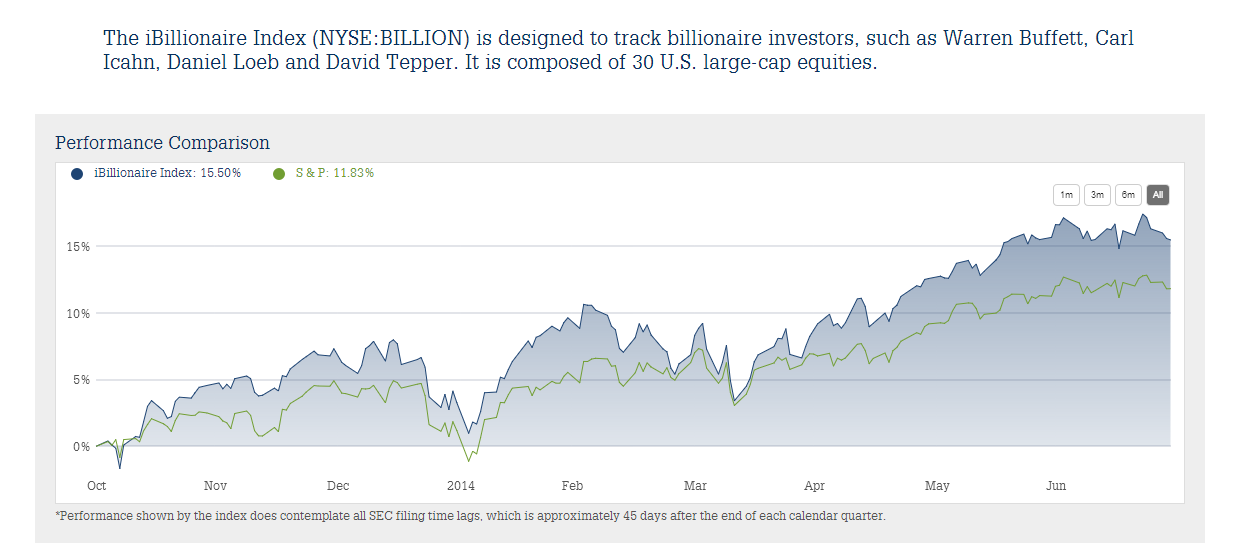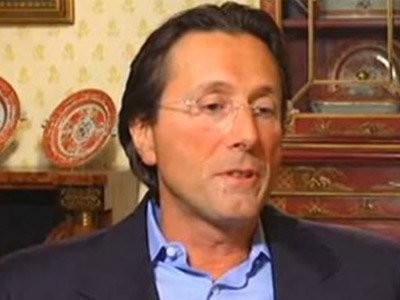Letting Top Hedge Fund Managers Pick Your Stocks
Post on: 17 Июнь, 2015 No Comment

To celebrate the launch of the my new software company, AlphaClone. I thought I would write a few articles on tracking the stock picks of top investment fund managers. I have a longer chapter in my upcoming book. but thought I would do a couple quick articles since I have mentioned the topic a number of times on World Beta .
Even though the tracking portfolios I followed on the blog outperformed substantially out-of-sample, most of the premise was based on subjective theories. Would following Okumus, Private, Greenlight, Blue Ridge etc. lead to excess returns? With the launch of AlphaClone we now have the ability to test virtually any fund or strategy possible.
Part I will be an overview of the theory and process behind tracking and backtesting hedge fund managers stock ideas through SEC filings. Part II will be a case study on tracking a single manager — Warren Buffett. Part III will be a case study on following a custom group of 10 fund managers mentioned in the past on my blog — the Tiger Cubs.
Part I — How to Track and Backtest the Stock Picks of the Top Investment Funds
If I have seen further it is by standing on the shoulders of giants. Sir Isaac Newton
Picking stocks is hard. Most academic research has shown that individuals stink at it. Many investors have painfully (re)learned this lesson in 2008 as stock markets collapsed around the globe.
That being said, would anyone deny that there are some people who are very good at stock picking? Just like any other profession, there are people who are experts in their field and these top professionals get paid handsomely for what they do.
Warren Buffett certainly comes to mind. Buffett is one of the most famous stock pickers of all time, and with an estimated net worth of more than $50 billion, he is also one of the richest people in the world. The 2007 Berkshire Hathaway (NYSE:BRK.A ) annual report indicates that the per-share book value of Berkshire Hathaway has increased at a compounded annual rate of 21.1% since 1965. Compared to an average of 10.3% for the S&P 500 including dividends, the outperformance is striking (and the Buffett numbers are after-tax).
If someone told you that you could have your portfolio managed by Warren Buffett, you would be interested, right? Did you know you can actually look up any institutional funds holdings online (if they have more than $100 million of assets under management), including those of the aforementioned Warren Buffett?
But how many of you do that? Considering these fund managers often spend every waking and sleeping moment thinking and obsessing about the financial markets, are significantly more capitalized than you, and have access to far more resources than you do wouldnt that make sense? An investor could use the information as an idea farm and jumping off point for more research, or simply outsource their portfolio management to these managers.
Following is a brief overview of the process of following these top managers.
SEC 13Fs
In 1975 Congress passed Section 13[f ] pursuant to the Securities Exchange Act of 1934. The measure required every institutional fund manager with assets under management over $100 million to report its holdings once a quarter to the Securities and Exchange Commission. Congress did this to improve the disclosure and transparency of these big firms with the hope of increasing confidence in the financial markets.
The name of the form is the 13F (also referred to as the Form 13F — HR). The data is uploaded to the SEC web site no more than 45 days after the quarters end, and an investor can view the holdings free of charge. By reviewing the 13Fs, you can view and understand the holdings of every manager from George Soros, to Seth Klarman, to Carl Icahn, to Warren Buffett.
Searching the SEC Database
The SEC maintains the EDGAR database and posts the electronic versions of 13F filings within a day after such filings are received. The data goes back to late 1999, although the archives in Washington, D.C. contain paper records that go back further.
All an investor has to do to retrieve the holdings is to visit the web site, and search under Company Name for the desired fund or company. In our first case study, we use Berkshire Hathaway(CIK # 0001067983) resulting in a laundry list of filings. We are interested in only the 13F filings, and the user can narrow down the list by inputting the Form Type provided (13F).
All of the quarterly 13F filings are now at your fingertips. Since the 13Fs are published within 45 days after quarter end, the quarter that ended June 30, 2008, would be available around August 15, 2008. Examining the most recent 13F from Berkshire reveals a list of long-time Buffett holdings including American Express (NYSE:AXP ), Wells Fargo (NYSE:WFC ), and Coca-Cola (NYSE:KO ). This information is indeed interesting, but can it be of any value?
Typically, the best investors to choose for this analysis are managers who employ long-term holding periods (in Buffetts case he has stated that his favorite holding period is forever). This will minimize the effects high turnover would have on the portfolio, and the 45-day delay in reporting times should not be a major factor in performance. (The data is 45 days stale when you see it, and the manager may very well not even own the stock by the time the 13F is posted. Although we have found turnover to be a minor influence on performance.)
It is very important to backtest the manager’s strategy in order to determine if it is appropriate for tracking. Many funds, such as the hugely successful Renaissance Technologies are not appropriate for trading due to their heavy involvement in derivatives. Many people follow their moves even though it does not offer any benefit to do so.
I believe that the major value added in the investment process from these managers is in stock picking and not in investment timing. The portfolios we will track are long-only. While most hedge funds short and/or use derivatives to hedge or leverage their ideas, these positions do not show up on the 13F filing (nor do international positions).
The simple methodology we are going to use is as follows:
1. Download all of the 13F quarterly filings.
2. If there are more than 10 holdings, simply use the 10 largest holdings, as the majority of a managers performance should be driven by his largest holdings.
3. Equal-weight the 10 holdings.
4. Rebalance, add / delete holdings quarterly, and calculate performance as of the 20th of the month to allow for all filings to arrive.
Following this process for backtesting manually will take an entire day using a simple strategy like the top 10 holdings (it took me a month to backtest 10 funds by hand about two years ago). Your analysis will also likely have survivor bias because historical prices for delisted stocks are not readily available.
To accurately calculate returns, we included the portfolio effects of all stocks that are no longer traded due to delistings, buyouts, mergers, bankruptcies, and so on. We also include all dividends (cash, stock, special, etc.). Often, databases and backtesting software packages do not account for stocks no longer trading, which can heavily skew results. AlphaClone automates this process by instantly backtesting even the most complex multi-fund strategies.
To summarize some of the differences in managing a portfolio based on 13F filings versus allocating an investment to a hedge fund manager, the following list is helpful.

Potential benefits of the 13F strategy versus allocating to a hedge fund manager include:
Access — Many of the best hedge funds are not open to new investment capital, and if they are many have high minimum requirements (in excess of $10 million in many cases). As Mark Yusko, owner of Morgan Creek Capital, said in Foundations and Endowment Investing. We dont want to give money to people that want our money. We want to give it to people that dont want it.
Fraud & Transparency — The investor controls and is aware of the exact holdings at all times, thus eliminating fraud risk. See Madoff.
Liquidity — The investor can trade out of the positions at any time, versus monthly, quarterly, or longer lockup periods at hedge funds.
Fees — Most funds charge high fees, the standard is 2% management and 20% performance fees. Fund of funds layer on an additional 1% and 10%. These fees would require a portfolio to generate 17% gross returns to deliver a 10% return to an investor. The fees associated with managing a 13F portfolio are simply the investors routine brokerage expenses.
Risk targeting — The investor can control the hedging and leverage to suit his risk tolerances. Blow-up risk from leverage or derivatives is eliminated.
Tax management — Hedge funds are typically run without regard to tax implications, while the investor can manage the positions in accordance with his tax status.
Potential drawbacks of the 13F strategy versus allocating to a hedge fund manager:
Expertise in portfolio management — The investor does not have access to the timing and portfolio trading capabilities of the manager (could also be a benefit).
Exact holdings — Crafty hedge fund managers have some tricks to avoid revealing their holdings on 13Fs shorting against the box and moving positions off their books at the end of the quarter are two of them. The lack of short sales and futures reporting means that the results will differ from the hedge fund results.
Forty-five-day delay in reporting — The delay in reporting will affect the portfolio in various amounts for different funds due to turnover. At worst, an investor could own a position the hedge fund manager sold out of 45 days ago.
High turnover strategies — Managers who employ pairs trading or strategies that trade futures are poor candidates for 13F replication.
Arbitrage strategies — 13F filings may show that a manager is long a stock, when in reality he is using it in an arbitrage strategy. The short hedge will not show up on the 13F.
In Part II I take a look at Warren Buffett as a case study to demonstrate how this process works (the short answer, great!). A simple clone of his top 10 holdings beats the market by over 10% a year since 2000 and is outperforming this year by over 15%.
Disclosure: None














